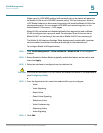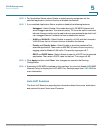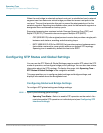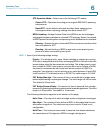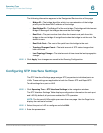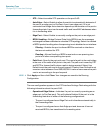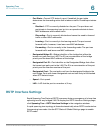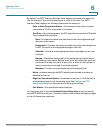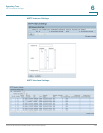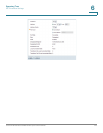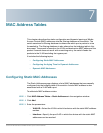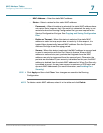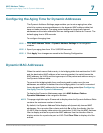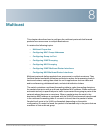
Spanning Tree
RSTP Interface Settings
Cisco Small Business SG200 Series 8-port Smart Switch 124
6
By default, the RSTP Interface Settings Table displays information for each port.
Use the Interface Type list to display ports or LAGs in the table. The RSTP
Interface Table displays the following information for each port:
• Point to Point Operational Status—A physical port has a point-to-point
connection to a LAN if it operates in full duplex.
• Port Role—Port role assigned by the STP algorithm to provide to STP paths.
The possible field values are:
- Root—Provides the lowest root path cost to the root bridge among all
the ports in the switch.
- Designated—Provides the lowest root path cost to the root bridge from
a LAN. The switch is the designated bridge in the LAN.
- Alternate—Provides an alternate path to the root bridge from the root
interface.
- Backup—Provides a backup path to the designated port path toward
the Spanning Tree leaves. Backup ports occur only when two ports are
connected in a loop by a point-to-point link, or when a LAN has two or
more connections connected to a shared segment.
- Disabled—The port is not participating in the Spanning Tree.
• Mode—Indicates whether the RSTP administrative mode is enabled or
disabled for the port.
• Edge Port Operational Status—If enabled for the port or LAG, the port is
automatically placed in the forwarding state. See Configuring STP
Interface Settings for instructions on modifying this setting.
• Port Status—The operational state of the port.
You can select a port and click Activate Protocol Migration to have the switch
send RSTP BPDUs to the port. This can be used to test whether all legacy bridges
on the LAN have been removed.



